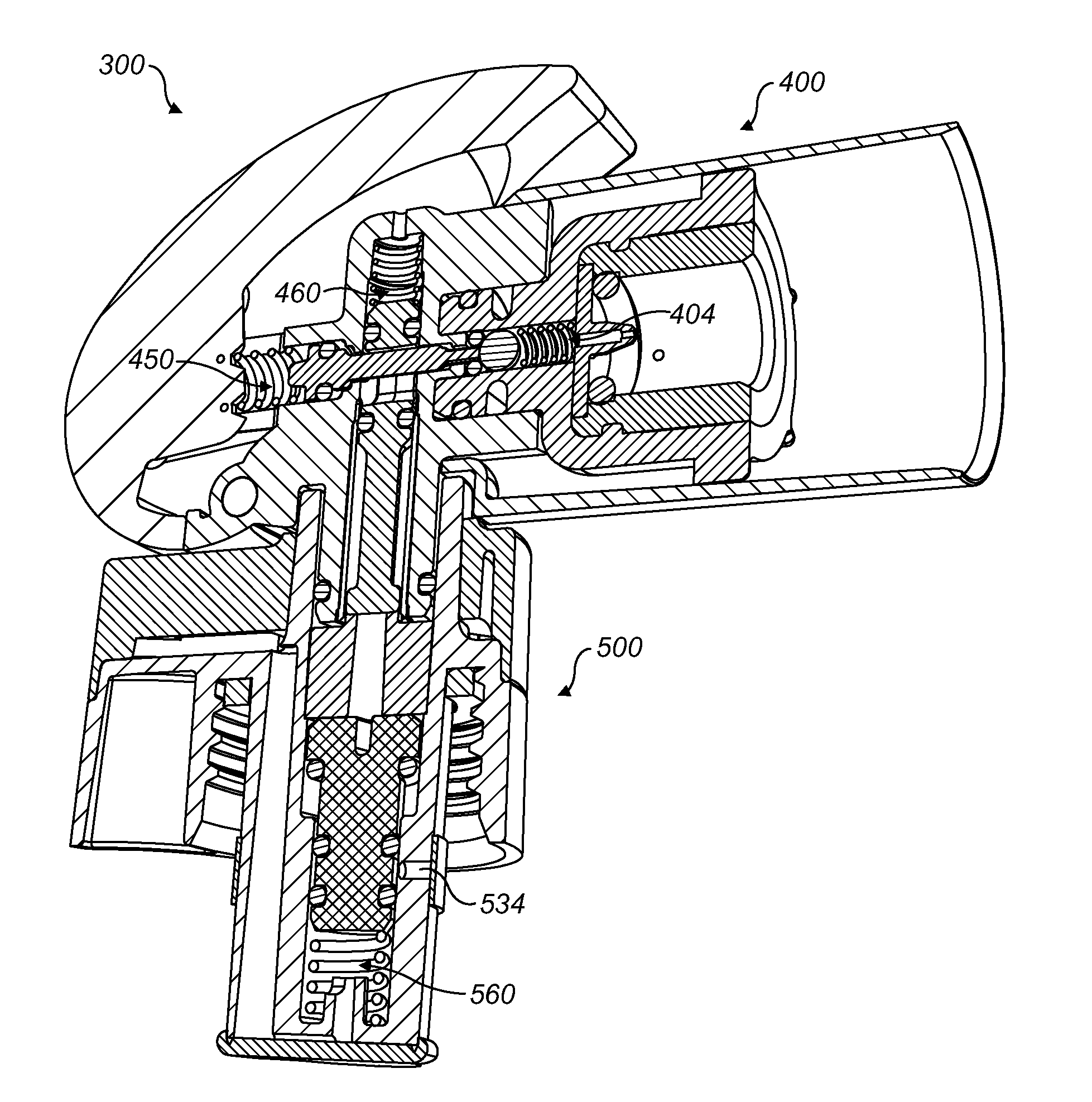Carbonating device, method of use, and related discharge and cap assemblies
- Summary
- Abstract
- Description
- Claims
- Application Information
AI Technical Summary
Benefits of technology
Problems solved by technology
Method used
Image
Examples
Embodiment Construction
[0022]FIG. 1 shows a carbonating apparatus 100 comprising a compressed gas source 200 and a carbonating device 300. The carbonating device 300 is formed from two parts; a discharge assembly 400 and a cap assembly 500.
[0023]The compressed gas source 200 connects to the discharge assembly 400. Here the discharge assembly includes an inlet 402 that is opened and closed by a valve 404. The valve 404 is biased to be closed. When opened, gas is released from the gas source 200 into the discharge assembly 400.
[0024]The discharge assembly 400 includes a trigger 410. Activation of the trigger 410 cause the valve 404 to open and therefore releases gas from the compressed gas source 200 into the discharge assembly 400. The discharge assembly 400 includes a discharge port 420 that discharges gas from within the discharge assembly 400. A valve 430 is arranged to open and close the discharge port 420. The valve 430 is biased to close the discharge port 420.
[0025]The cap includes a sealing portion...
PUM
| Property | Measurement | Unit |
|---|---|---|
| Force | aaaaa | aaaaa |
| Pressure | aaaaa | aaaaa |
Abstract
Description
Claims
Application Information
 Login to View More
Login to View More - R&D
- Intellectual Property
- Life Sciences
- Materials
- Tech Scout
- Unparalleled Data Quality
- Higher Quality Content
- 60% Fewer Hallucinations
Browse by: Latest US Patents, China's latest patents, Technical Efficacy Thesaurus, Application Domain, Technology Topic, Popular Technical Reports.
© 2025 PatSnap. All rights reserved.Legal|Privacy policy|Modern Slavery Act Transparency Statement|Sitemap|About US| Contact US: help@patsnap.com



